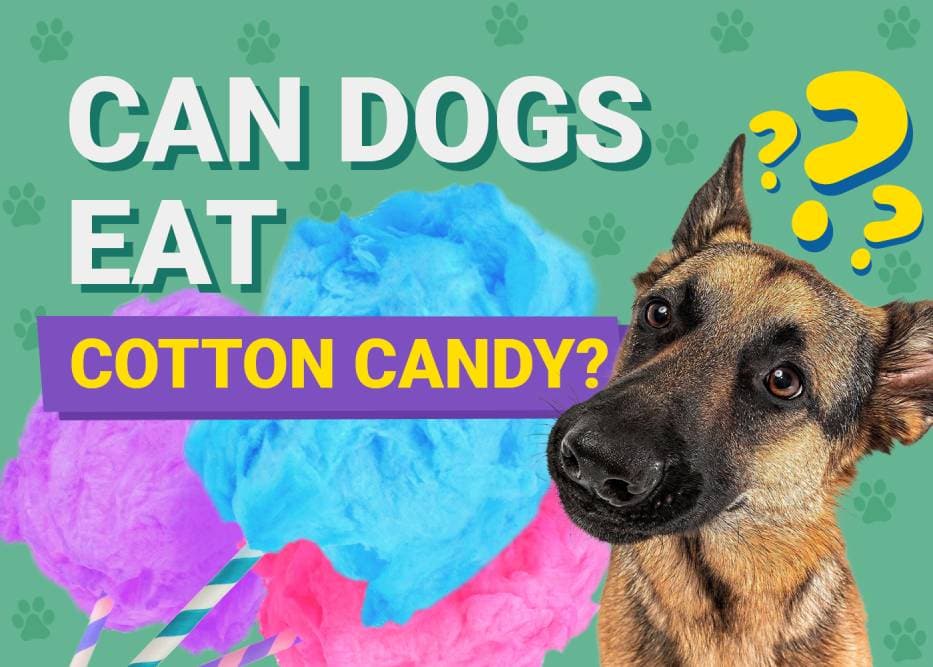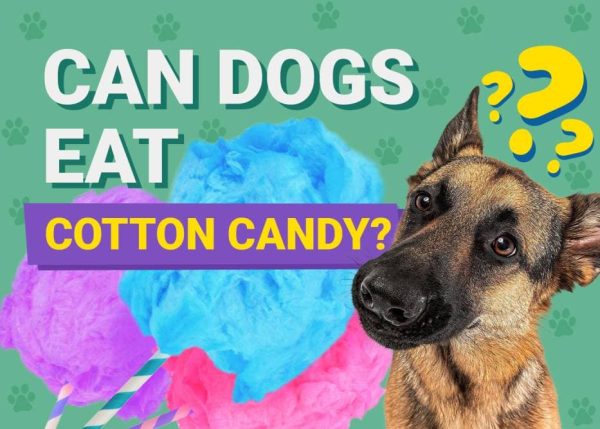We all want to share our special treats with our dogs, but some things are off-limits. Cotton candy, which is just air and sugar, may seem fine, but it’s not good for your dog’s health.
Can dogs eat cotton candy? Is it safe? Technically, dogs can eat cotton candy because it’s not usually toxic. But because it’s sugar, it’s not an ideal treat. Some types of cotton candy can present additional risks as well.
What’s in Cotton Candy?
Cotton candy, also known as “fairy floss,” is traditionally made with just two ingredients: sugar and coloring/flavoring. Using a machine with centrifugal force, granulated sugar is heated and spun into long, glass-like strands that resemble cotton—lending the treat its name.
Though it’s made almost entirely of sugar, one ounce of cotton candy has less sugar than a can of soda and just 100 calories.
The Risks of Cotton Candy for a Dog
Should you feed a little cotton candy to your dog? Though it’s not toxic, it’s not good for them either. Excess calories especially in small dogs can result in weight gain. Over time, excess sugar can contribute to conditions like diabetes.
Obesity leaves your dog susceptible to a range of health conditions, including heart disease, diabetes, hypertension, osteoarthritis, bladder stones, and several types of cancer.

When Cotton Candy Isn’t Safe
Most cotton candy isn’t directly toxic or harmful for your dog, but that doesn’t apply to all types. Advancements in food science have led to different cotton candy flavors and types than the classic pink or blue cotton candy we see at fairs, including chocolate cotton candy.
Chocolate is toxic to dogs because of a substance called theobromine. Pure cacao and dark chocolate contain higher concentrations, but it’s present in all types of chocolate, including chocolate cotton candy.
Theobromine is used medicinally as a diuretic, heart stimulant, blood vessel dilator, and smooth muscle relaxant. Dogs can’t metabolize it as well as people, which is why they’re more sensitive to its effects.
The signs of chocolate toxicity in dogs vary, but they typically include increased thirst, vomiting, diarrhea, panting, excessive urination, and a racing heart rate. With severe toxicity, the symptoms may include seizures, tremors, and heart failure.
Another hidden risk comes from chemicals and additives. Sugar-free cotton candy may contain artificial sweeteners like xylitol, which is extremely toxic to dogs. Even in small amounts, it can cause hypoglycemia, seizures, liver failure, or death.
In humans and dogs, the level of blood sugar is controlled by insulin release from the pancreas. Xylitol is low-glycemic in humans, meaning it has minimal effect on blood sugar levels. In dogs, the xylitol does prompt the release of insulin from the pancreas. The dog’s blood sugar then drops dramatically, which can be life-threatening.
Conclusion
Like other sugary treats, it is best to avoid giving your dog cotton candy. Though a little bit isn’t likely to cause a problem, there are potential risks. If your dog is always interested in your treats, stick to commercial dog treats and enjoy the cotton candy on your own.
Related reads:
- Can Dogs Eat Pineapples? Vet-Reviewed Nutrition Facts & FAQ
- Can Dogs Eat Cucumber? Vet-Reviewed Nutrition Facts & FAQ











